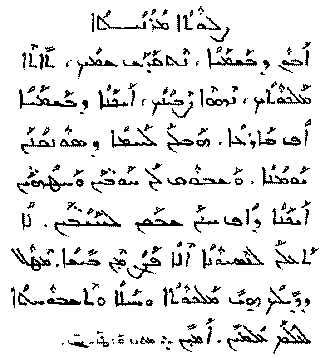I've always been curious about ancient
history, and one area that is interesting to me is early religious
and historical writings. The Dead Sea Scrolls are one subject that is
intriguing. It is somewhat difficult to slog through the translations
especially if they have blank spaces and fragmented bits of
translations. Learning about the history and the overarching meanings
in the scrolls though, is agreeably interesting.
I've read a few books, perused
translations and tried to learn about the history surrounding the
area and the people involved. My intent here is not to give a
comprehensive history of the scrolls, there are numerous places to
learn that, be it through books or the internet. I'd just like to give highlights from my study of the scrolls that are particularly
interesting. Any fan of Dr. Hugh Nibley will know
that a lot can be learned from his writings about the subject of
ancient history, including the scrolls, other useful author's I have
read and enjoyed on the subject include Vernon W. Mattson, Jr. and
Giza Vermes, to name just a few.
Seven large scrolls were found in cave
#1:
- The Isaiah Scroll, a complete copy of Isaiah from the Old Testament
- Another (poorly preserved) Isaiah Scroll, which is close to the Masoritic text
- The Habakkuk Commentary
- The Manual of Discipline
- Thanksgiving Hymns
- The War Scroll "The War of the Sons of Light Against the Sons of Darkness"
- The Genesis Apocryphon (or Lamach Scroll) in Aramaic, mentioning Noah, Abraham, and Sarah (compare Genesis chapters 12-15 of the Old Testament) this scroll also contains extra Biblical material.
All of the books of the Old Testament
except Esther are represented in the Dead Sea Scrolls.
-What is the Masoritic Text? It
is the authorative Hebrew text of the Jewish Bible.
-Who was Habakkuk? A Hebrew
Prophet believed to have lived in Jerusalem around approximately 612
BC.
-What is the Manual of Discipline?
It is an important document (also called the Rule of Community) that
was produced by the Jewish Essene community that settled in Qumran
around 200 BC. They believed Jerusalem was corrupt and wanted to
remove themselves from it. The manual explains religious and moral
ideals believed by the community.
-What is the The War Scroll?
Prophecies of a war between light and darkness, good and evil. In the
end darkness is destroyed. Divine intervention finally wins the
battle. Armaments, war banners, and the equipment of warfare are also
mentioned. Some scholars say the descriptions are similar to Roman
warfare methods.
Explain Lamech and Aramaic: When
the scrolls were found Lamech's name was seen as mentioned so it was
thought this scroll was some writings of Lamech. It was a very
delicate scroll and it is said it took seven years to unroll it. This
scroll's name was changed to The Genesis Apocryphon after it was
translated because it talks about the journeys of Abraham the
Prophet, about his wife Sarah, and tells of the birth of Noah. It is compared to Genesis chapters 12 to 15 of the Old
Testament but also has some additional material in it.
 |
| John 3:16 in Aramaic |
Aramaic is a dialect of the Semitic
language family which also consists of Hebrew and Phoenician. Aramaic
script is believed to be the precursor to the modern Arabic and
Hebrew alphabets.



No comments:
Post a Comment